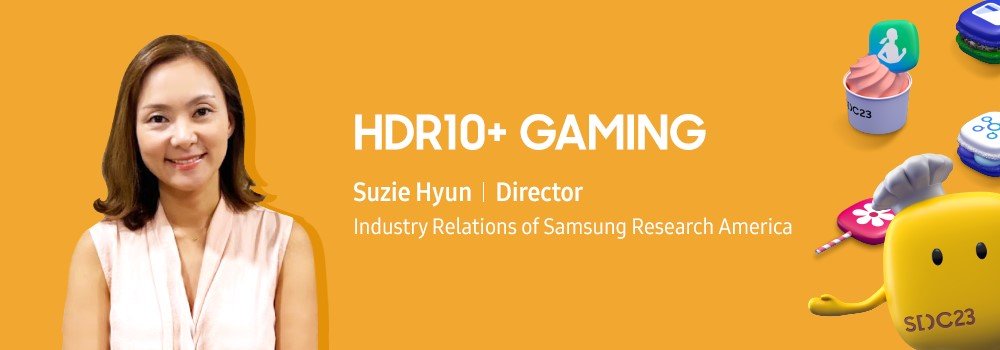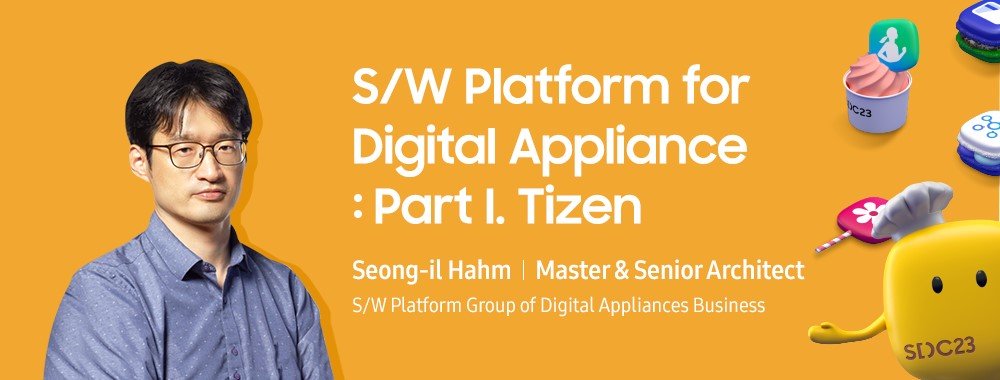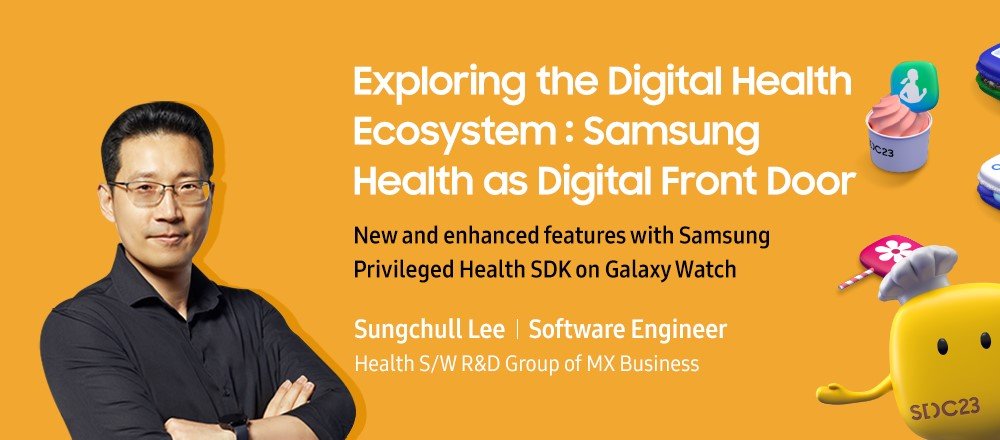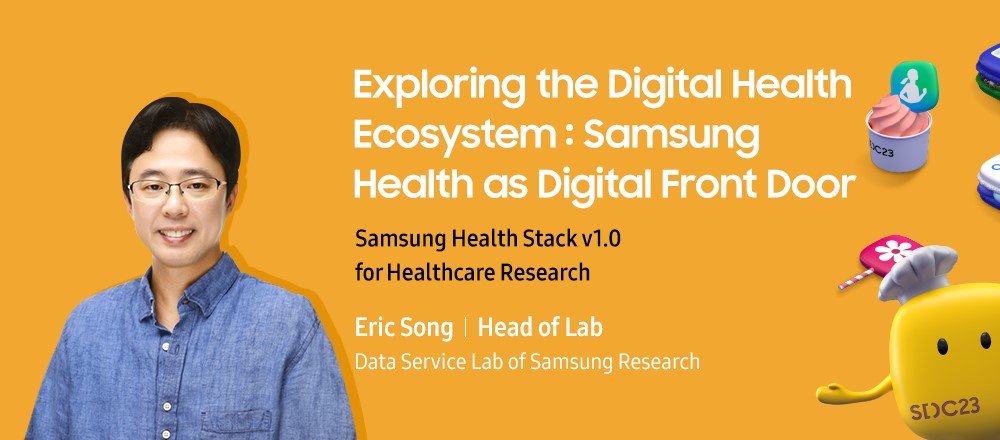Samsung Electronics, with its wide range of products and services, remains committed to delivering industry-leading innovations that enhance and redefine the lives of its users around the world. At this year’s Samsung Developer Conference 2023 (SDC23) — held on October 5 in San Francisco, CA — the company unveiled the latest advancements to its software and device services. Samsung executives and employees discussed the next-generation technologies equipped within Samsung products, enhancing the way users interact with the platforms and innovative products from both Samsung and its partners.
Samsung Newsroom sat down with five prominent SDC23 speakers to delve deep into some of the company’s updates and how they add convenience to and revamp the user experience.
SmartThings and Matter: Offering an Even Better Connected Experience
Charles Kim of the SmartThings Team highlighted the updates to Samsung’s SmartThings home ecosystem, including expanded support for Matter devices, and discussed how SmartThings is leading the new era of smart homes through its advanced multi-device network.

Q. SmartThings has been working hard to create a hyper-connected experience for customers based on seamless interoperability with third-party devices. Could you discuss a few of the most notable announcements unveiled during this year’s SDC?
Matter stands as the universal IP-based communications protocol for smart home IoT devices, and is supported by major corporations all over the world. When it comes to expansive smart home experiences, Samsung has been at the forefront of widening its device network, which was furthered by its added support for Matter devices beginning last year. To expand on this, we are now offering an enhanced Matter-compatible ecosystem that will allow developers to create new apps, hubs and clouds.
One of our first steps is to expand the application of Matter to a broader range of devices and introduce new features to these devices to enhance its capabilities. These features include adding control functionalities for Matter-compatible devices, which support Matter Bridge1 devices as well as over-the-air (OTA)2 and Multi-Hub Network.3 One of Matter’s key advantages is its compatibility with various platforms from different companies. As such, it facilitates easier usage of the Multi-Admin4 feature, allowing administrators to efficiently control multiple devices simultaneously from a single platform.
To take innovation further, we plan to introduce an Application Programming Interface (API) for controlling Matter devices via the SmartThings Hub — making it easier for developers to utilize Samsung’s platform. In addition, the Software Development Kit (SDK) will allow the seamless integration of Matter devices within the SmartThings platform.
We hope that this will empower more developers to deliver new, advanced services to users that utilize Matter devices within the SmartThings platform.
Q. How will SmartThings contribute to the evolution of smart homes in the future?
Our vision for SmartThings encompasses various dimensions of home automation. Currently, users can control Samsung and third-party IoT devices in their homes through SmartThings, which gives them the ability to optimize and automate certain functions among connected devices. Looking forward to the future, smart homes are poised to elevate personalized home experiences by harnessing the power of device-connected AI and machine learning, which will deliver users ultra-personalized home services that meet their unique needs and preferences.
One of these future-forward settings is Ambient Sensing, which recognizes the space the user is in and automatically adjusts to the user’s preferred settings. Additionally, we intend to advance Edge Computing technology to ensure a stable and secure connection experience for users, enabling SmartThings to serve as a main hub for such services. Our aim is to help users enjoy a higher quality of life, and we will continue enhancing SmartThings in order to achieve this goal.
HDR10+ GAMING: Delivering a Perfectly Immersive Gaming Experience
Alongside the rapid expansion of the gaming market came an increased demand for an enhanced gaming environment. In line with these trends, Samsung has been working with leading game content companies to develop advanced visual technologies, setting a standard for the industry. Suzie Hyun of Samsung Research America spoke about HDR10+ GAMING.

Q. As game image quality technology continues to advance, what are the advantages of using HDR10+ GAMING while playing games?
In comparison to the conventional Standard Dynamic Range (SDR) format, High Dynamic Range (HDR) displays images at a higher brightness, greater contrast and with a wider color range — accentuating all on-screen details and making gameplay even more immersive.
From the standpoint of a developer, an ideal HDR gaming experience provides jaw-dropping realism, fully immersing users in the heart of the action. Equipped with HDR10+ GAMING technology, game creators are able to provide next-level immersion, drawing users deeper into the game world.
On the user side, HDR10+ GAMING technology automatically sets the game and display to optimal HDR settings, ensuring a consistent, stunning and engaging gaming session from start to end.
Q. How is HDR10+ different when watching videos and gaming?
HDR10+ GAMING technology delivers cutting-edge gaming experiences by combining ultra-responsiveness, an important factor for ideal gameplay, with leading image quality optimization technology. Equipped with these advanced technologies, HDR10+ GAMING provides immersive gaming experiences and allows users to experience the content as the game creator intended.
The Software Platform Innovation for Home Appliances: Tizen
The Tizen operating system will be extended and is set to be integrated into a broader range of home appliances. SeongIl Hahm of the S/W Development Team explained Tizen and its distinguished services that upgrade user experiences.

Q. What role does Tizen play in home appliances?
The landscape of home appliances has undergone a remarkable transformation, expanding beyond customers’ imagination. With the integration of the latest AI technologies, these appliances can perform a variety of unique functions. For example, appliances can detect food, the user’s voice and presence using high-tech cameras, microphones and Neural Processing Units (NPUs).
In driving these innovations forward, Tizen — Samsung’s open and flexible operating system (OS) — will help evolve home appliances and expand their capabilities. Samsung plans to expand Tizen to home appliances equipped with even larger screens than before, which will allow users to intuitively check the status of their devices and control them, as well as monitor other devices connected to SmartThings.
Tizen not only supports network, multimedia, web and security capabilities, but it also offers flexible software performance based on different hardware modules across product lines. It provides a web and development environment that is most commonly used by developers so helps them to adopt services easier.
Q. During SDC23, new technologies such as on-device AI and AI Home Edge Hub were introduced. How will these advancements elevate the capabilities of home appliances?
On-device AI-support signifies the integrated AI engine within home appliances, supporting round-the-clock deep learning inference. Home appliances generate a wealth of information, far beyond what users may realize. Learning from this information can significantly improve the user experience. Examples of AI functionalities include how refrigerators and air conditioners can save energy by predicting the temperature, how vacuum cleaners adjust the cleaning mode according to the floor type, and how washers and dryers can optimize laundering according to the clothing material.
Another important consideration that AI performance levels vary among different home appliances led us to work on developing AI Home Edge Hub. By device-to-device sharing of AI capabilities, it significantly enhance the performance of each device.
To illustrate this, let’s imagine that an AI inference task was delivered to the Family Hub, which is the most smart appliance nearby. Upon receiving this information, the Family Hub transmits it to the robot vacuum cleaner, which then notifies the user when the cleaning process is complete.
Many of these futuristic scenarios will become realizable through cutting-edge software innovation.
Samsung Privileged Health SDK: Helping the Development of Advanced Digital Health Services and Solutions
Incorporating essential features such as sleep, fitness, mental health services and health indicator monitoring, Samsung Health has firmly established itself as a comprehensive health solution. Sungchull Lee of the Health S/W R&D Group presented Samsung Privileged Health SDK, which offers users an unparalleled digital health experience.

Q. Could you introduce some of the main developers and partners that are using Samsung Privileged Health SDK?
With the Samsung Privileged Health SDK, Samsung aims to support developers and service providers in developing more sophisticated and advanced digital health services and solutions.
Developers and service partners around the world have expressed their interest in utilizing Samsung Privileged Health SDK and many are using it to develop apps. Interested parties can apply to the Partner Program via the official Samsung Developer website and can begin developing and utilizing the platform’s suite of tools once approved.
According to data measured on the Galaxy Watch’s BioActive sensor, our SDK partners span across a variety of digital healthcare fields — including heart health monitoring, remote patient monitoring, mental health services, worker healthcare and digital therapeutics. Moving forward, our primary goal is to strengthen Samsung Privileged Health SDK’s role as a health platform and expand its ecosystem to support the sustained growth of our partners.
Q. What are the strengths of the Samsung Privileged Health SDK, and how can digital health services harness its capabilities?
Samsung Privileged Health SDK offers a convenient and consistent development environment, as developers can measure biometric information through the Galaxy Watch’s BioActive sensor.
Within the Samsung Privileged Health SDK, there is a range of data types available for service research and development, including the Galaxy Watch’s specialized functions — body composition and skin temperature measurement. Additionally, the platform incorporates an advanced batching method, which aggregates data for a certain period of time to ensure both efficient data measurement and minimal battery consumption.
The skin temperature measurement function, for example, can be used to improve sleep habits, predict the menstrual cycle, estimate exercise intensity and so on, whereas the inter-beat interval can calculate stress index, detect sleep stages and monitor irregular heart rate.
Samsung’s commitment to enhancing SDK’s capabilities persists, and it will continue to provide a consistent and simple API with samples to make it easier for developers to utilize.
Samsung Health Stack: Contributing to Broadening the Digital Health Ecosystem
Amidst increasing adoption of digital tools and software for medical research within the healthcare industry, Eric Song of Samsung Research’s Data Services Lab introduced Samsung Health Stack — a groundbreaking open-source tool designed to simplify the management and analysis of health research.

Q. Samsung Health Stack was first unveiled at SDC last year, and subsequently released version 1.0 this year. What objectives does Samsung aim to accomplish with Samsung Health Stack?
Looking at recent trends in the IT industry, a variety of wearable devices are rapidly evolving. In the same regard, sensor technology that can be deployed is advancing at a swift pace.
Alongside these technological advancements, the concept of “digital therapeutics” has gained traction within the healthcare industry. Many organizations are actively seeking to treat diseases in novel ways, including the use of software to further these aims. The goal of Samsung Health Stack is to make it easier for medical researchers, who may be unfamiliar with IT systems, to safely access and utilize digital health information.
Additionally, as an open-source project, Samsung Health Stack seeks to dismantle the barrier between medical researchers and the field of digital technology field, laying the groundwork for the development of the digital health industry.
As it supports developers and researchers in the field, Samsung Health Stack will contribute to the establishment of a digital health ecosystem for both Samsung and the broader healthcare industry.
1 Technology that enables devices with multiple connection protocols, such as Zigbee and Z-Wave, to connect to Matter and allows Matter and non-Matter devices to communicate.
2 A function that supports firmware updates of Matter devices.
3 A function that connects Samsung’s various hubs on a single platform.
4 A function that controls Matter devices and multiple connected platforms simultaneously and shares the device’s status with users.
This article was first published at Source link . You can check them out for other stuffs
